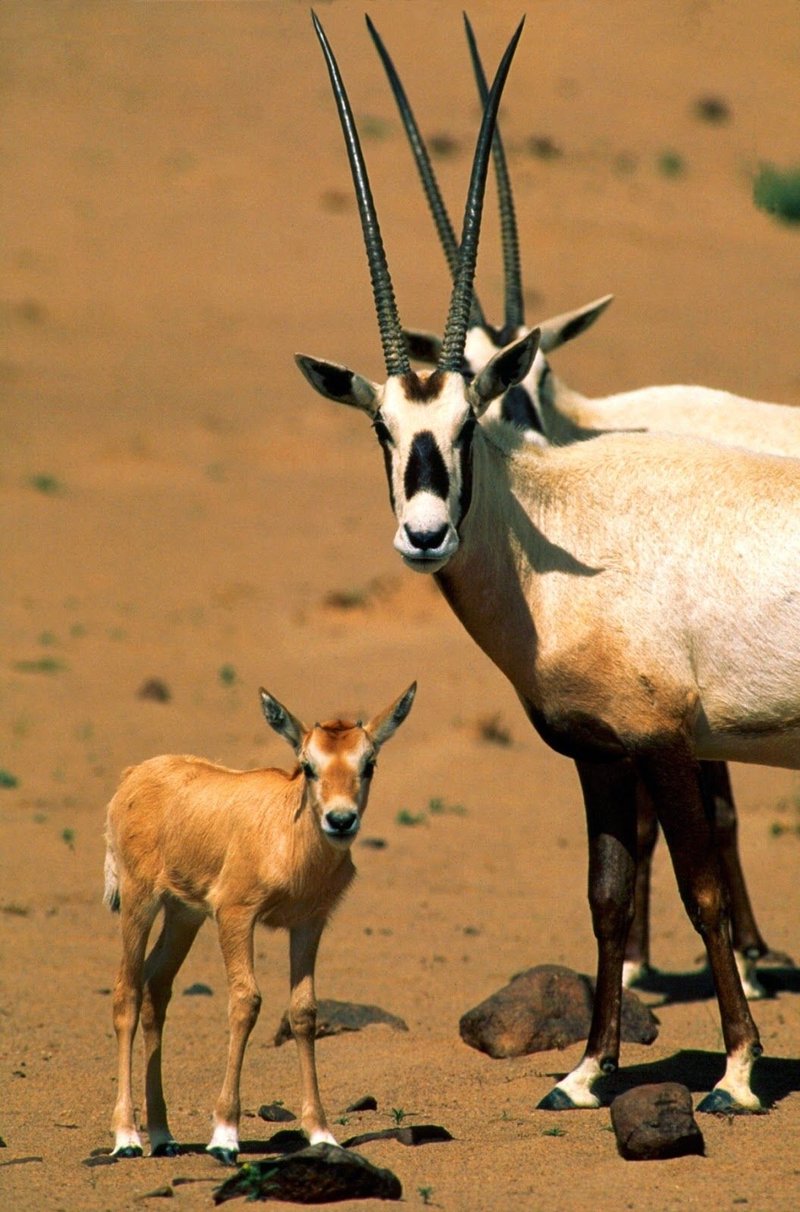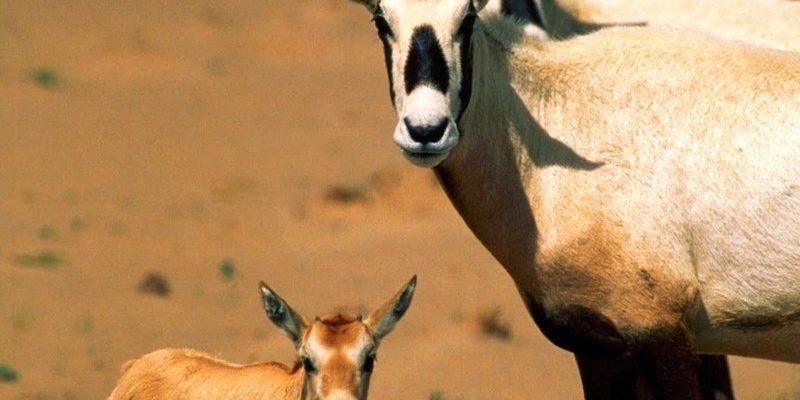
The oryx, specifically the Arabian oryx, once roamed across the Middle East, but its numbers have drastically declined due to hunting and habitat loss. Luckily, conservationists have stepped in with various efforts to protect and restore its population. Understanding the plight of the oryx not only raises awareness but also highlights the importance of conservation initiatives worldwide. Let’s dive into what makes the oryx unique and what’s being done to ensure its survival.
What Are Oryxes? A Quick Overview
Oryxes are large antelopes native to arid regions, primarily in Africa and the Middle East. Their striking appearance, with sleek bodies and long, sharp horns, helps them thrive in hot, dry climates where food and water can be scarce. There are several species of oryx, including the African oryx and the Arabian oryx.
These animals are perfectly adapted to their environments. For instance, they can withstand extreme heat and can go long periods without drinking water. Instead, they get moisture from the plants they eat. Oryxes are social creatures, often found in small herds that help protect them from predators. However, their natural habitat is shrinking, leading to decreased populations.
Here’s the thing: understanding the biology and behavior of oryxes is crucial because it forms the foundation for conservation efforts. By knowing how they live and thrive in the wild, we can better protect them from the challenges they face.
Why Are Oryxes Endangered? Key Threats
You might be wondering what exactly is putting the oryx at risk. Several threats contribute to its endangered status.
1. Habitat Loss: As human populations grow, natural habitats are destroyed for agriculture, urban development, and infrastructure expansion. As a result, oryxes have less space and resources to thrive.
2. Hunting: In some areas, oryxes have been hunted for their meat and horns. Illegal hunting can severely impact their populations.
3. Climate Change: Rising temperatures and changing weather patterns can alter the delicate ecosystems where oryxes live. Droughts and food scarcity can make it challenging for them to survive.
4. Invasive Species: Non-native plants and animals can disrupt the food chain and compete for resources, further endangering the oryx.
These threats illustrate the complex web of factors jeopardizing the oryx population. To create effective conservation strategies, we must address these challenges head-on.
Conservation Efforts: What’s Being Done?
The good news is that there are concerted efforts to save the oryx from extinction. Various organizations and initiatives have sprung into action to protect this magnificent species.
For example, the Arabian Oryx Recovery Program has been pivotal in increasing the wild population of the Arabian oryx. It started with captive breeding programs that successfully released oryxes back into their natural habitats.
Additionally, wildlife reserves and national parks offer safe environments where oryxes can thrive away from human interference. These protected areas prevent hunting and habitat destruction, giving oryxes a chance to rebuild their populations.
Conservationists also focus on educating local communities about the importance of the oryx. By fostering a sense of stewardship, these programs encourage people to protect the species and its habitat.
This blend of science, community engagement, and policy is crucial for the continued survival of the oryx.
The Role of Zoos and Captive Breeding
You might be surprised to learn that zoos play a significant role in conserving oryxes. Many zoos around the world participate in captive breeding programs to help boost the population. These programs carefully manage breeding to ensure genetic diversity and the overall health of oryx populations.
When oryxes are bred in captivity, they can be monitored for health issues, and their offspring can be trained for eventual release into the wild. These efforts have been successful, with the Arabian oryx population increasing from just a few dozen individuals in the 1980s to over a thousand today.
Visiting a zoo can be a great experience, but it also helps raise awareness about conservation. Zoos often have educational programs that teach visitors about the challenges facing oryxes and what they can do to help.
Community Involvement and Awareness
Conservation isn’t just about scientists and organizations; it’s also about communities working together. Local communities play a critical role in protecting oryxes, and many initiatives focus on engaging them in conservation efforts.
For instance, some programs provide alternative livelihoods to communities that might otherwise rely on hunting. By promoting eco-tourism or sustainable agriculture, these communities can find new ways to thrive without harming oryx populations.
Here’s the thing: when local people understand the value of preserving their environment, they’re more likely to support conservation efforts. This community-driven approach is essential for long-term success.
Future Outlook for the Oryx
So, what does the future hold for the oryx? While there is still much work to be done, conservation efforts have shown promising results. The Arabian oryx, for example, has been down-listed from extinct in the wild to vulnerable due to successful breeding and reintroduction programs.
However, ongoing threats—like habitat loss, climate change, and poaching—still loom large. For oryx populations to continue to grow, it’s vital that conservationists keep pushing for policies that protect their habitats and ensure their survival.
By raising awareness and encouraging involvement at both local and global levels, we can create a brighter future for the oryx. With continued dedication, these stunning creatures can thrive once again.
Final Thoughts: The Importance of Conservation
In the grand tapestry of our natural world, every species—like the oryx—plays a vital role. Losing any one of them can disrupt ecosystems and diminish biodiversity. The fight to protect the oryx is part of a larger mission to preserve our planet’s rich heritage.
As we delve deeper into conservation, we can appreciate not just the beauty of the oryx but also our power to make a difference. By advocating for wildlife protection, supporting conservation organizations, and raising awareness, we can ensure that future generations will be able to witness the elegance of the oryx in the wild.
Together, let’s champion the cause to protect these incredible animals and their habitats. After all, when we save the oryx, we’re also preserving a piece of our global story.

